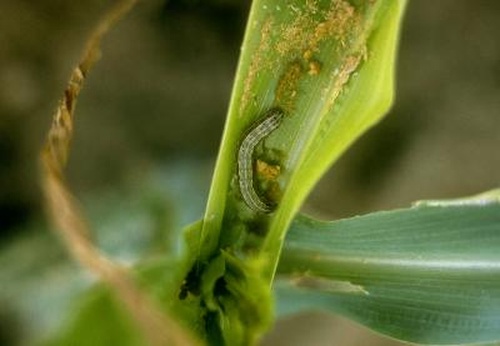
Plant Protection is a branch of agricultural science that devises ways and means of controlling diseases, pests, and weeds of crops and trees, as well as a set of measures used in agriculture and forestry to prevent and eliminate the damage done to plants by harmful organisms.
The goal of plant protection is not only to destroy harmful organisms or limit their activity but also to forecast the time they appear and the possible extent to which they might spread, as well as to prevent harmful organisms from moving from some countries and regions to others.
In 2016, a tomato insect pest, Tuta absoluta (a pest which originated from the Andean region in South America), invaded farms across Nigeria, devastating tomato fields and leading to unfathomable financial losses to farmers.
The invasive nature of this pest and its defiance to conventional insecticides made it difficult to control. Which consequently led to serious setback to the continent’s agriculture.
But that was not the first time the pest would be destroying farms in Africa. According to CABI (the Centre for Agriculture and Biosciences International), the pest had badly affected agriculture in Egypt and Sudan in 2012. And since then, countries such as Ethiopia, Libya, Morocco, Senegal and Tunisia had also been reported to have experienced the dreaded pest.
The World Trade Organisation Sanitary and Phytosanitary (WTO-SPS) Agreement empowers individual countries’ plant protection organisations to draw up measures that are potent enough to prevent the introduction of pests that may arise through trade.
Prior to the WTO-SPS agreement, Africa’s protection of agriculture relied on the 1968 African Convention on the Conservation of Nature and Natural Resources, and the 1985 protocol on protected areas and wild fauna and flora in the East African region.
The emergence and the reemergence of Tuta absoluta on the African agricultural landscape has again raised the questions regarding the continent’s readiness and ability to protect local agriculture and improve international trade.
The Inter-African Phytosanitary Council, established around 1954 and reinforced in 2003 by the Maputo declaration on Agriculture and Food Security, is yet to metamorphose into a regional standard body such as the European Plant Protection Organization (EPPO) which was also founded in the 50s.
However, despite these shortcomings, if the agency is properly managed, it still remains the most veritable platform to champion the cause of protecting Africa’s agriculture from invasive pests in all their forms.
Africa can take a cue from the United States, on how it became free of the Tuta aboluta, despite its proximity to the South American coasts where the insect pest is endemic.
After they discovered the destructive nature of this pest, the Animal and Plant Health Inspection Service of the United States Department of Agriculture swiftly swung into action by introducing a programme in 2011 to help report incidence and assist in wiping out the pest, wherever it is found.
The programme was apparently a huge success but would have been limited if not for the collective method adopted by the United States to tackle the pest.
Africa’s agriculture is still vastly in the hands of smallholder farmers, and poor rural farmers are often the first to bear the brunt of plant pests and disease problems.
Therefore, to put an end to the plant protection issue in Africa, there should be national and regional plant protection policies geared towards achieving an efficient system that ensures injury caused to plants by biological, environmental and ecological factors in a sustainable and economical manner.

ConversionConversion EmoticonEmoticon